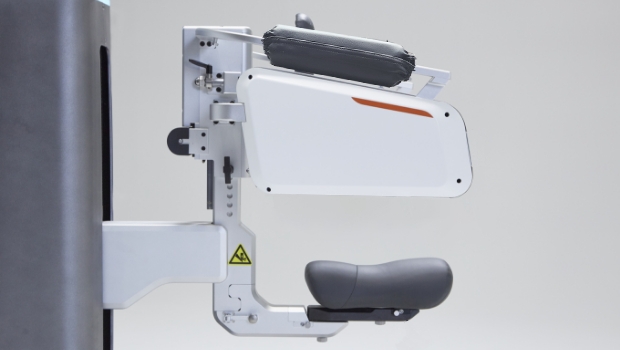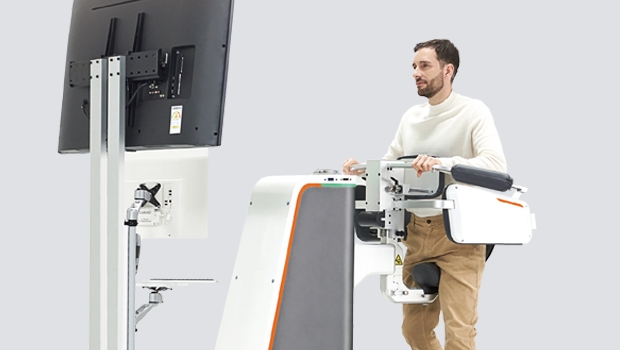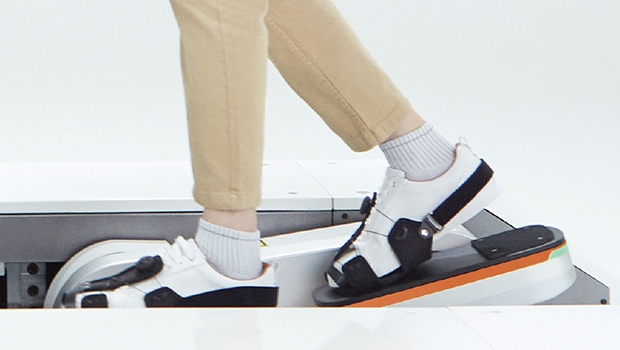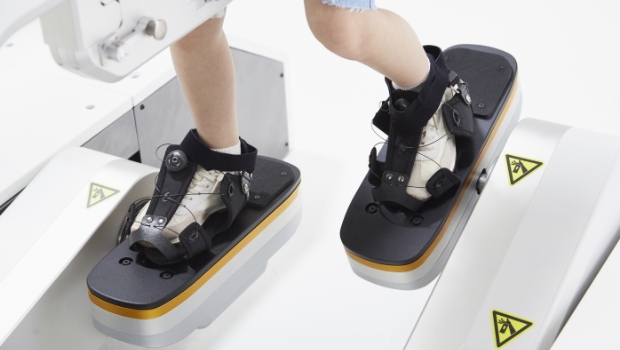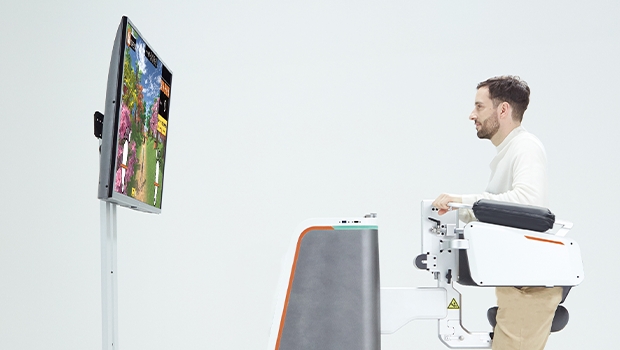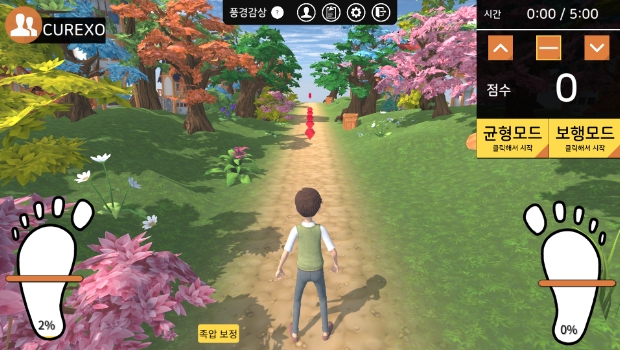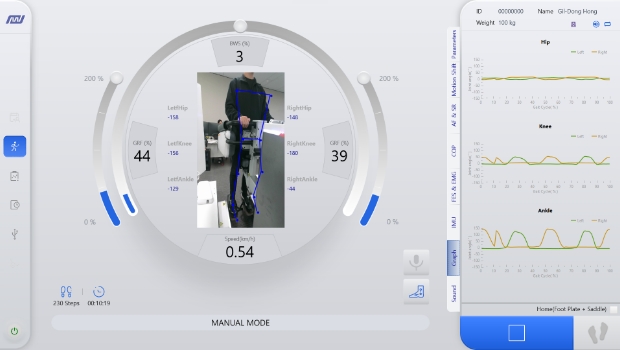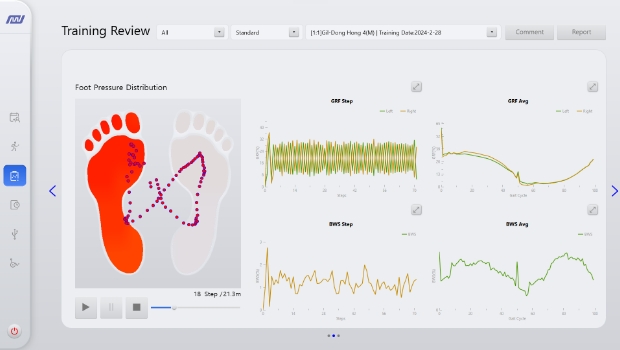-
Point. 01
Saddle-type body supporting system
- Short treatment preparation time due to simple seating system.
- Provides boarding/alighting mode for severely ill patients.
- Max. 200kg user.
- Expansion of patient spectrum due to weight support(15-80%).
- Available boarding height 100 ~ 200cm.
-
Point. 02
End-effector type gait training system
- Study results show it is a more effective rehabilitation method for lower limb movements.*
- Various gait motions such as ground, stairs (3 types of height), slope (4 types of angle).
- Providing training mode (Standard, Speed Interaction, Trajectory Interaction, Active Interaction, Section Repeat)
- Max. 3.3km/h gait training : Step (30-73cm) / Cadence (40-75steps/min).
- Divided foot plates.
- Able to adjust the step width.
* Electromechanical-assisted gait training after stroke: a systematic review comparing end-effector and exoskeleton devices (J. Mehrholz and M. Pohl; J Rehabil Med 2012)
-
Point. 03
VR(Virtual Reality) S/W(Option)
- Creation of VR trails and parks, batting game : High therapy effect by stimulating interest.
- Personalized interface : Identification of every robotic motion and patient training condition.
- Gait parameters linked.
-
Point. 04
Biological monitoring and real-time feedback
- Real-time angle check of the hip, knee and ankle.
- Ground Reaction Force (GRF), Body Weight Support (BWS) and Foot Pressure Distribution Monitoring.
- Balance sense monitoring in butterfly diagram.


